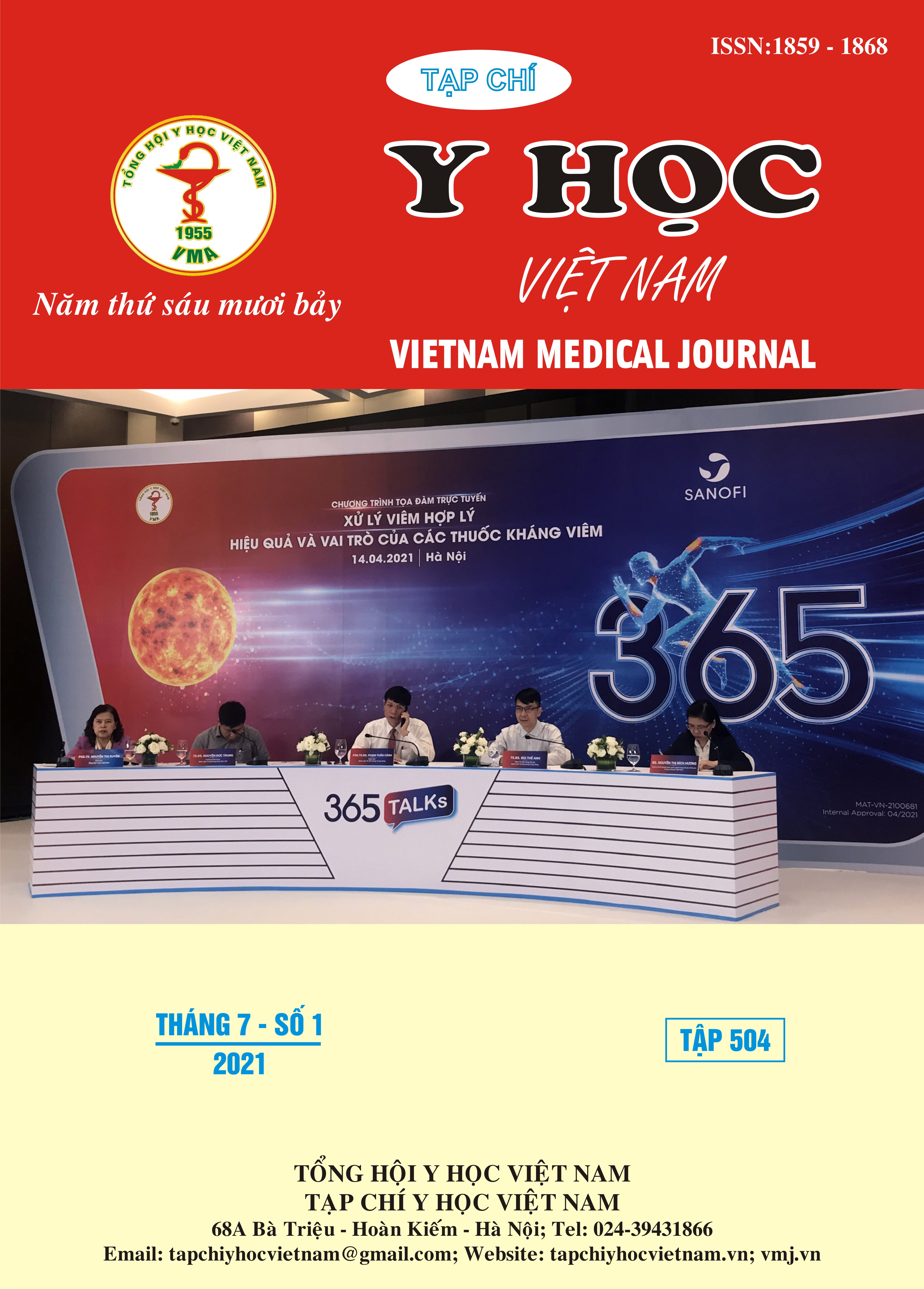HIỆU QUẢ CỦA DỤNG CỤ TỬ CUNG MIRENA TRONG ĐIỀU TRỊ MỘT SỐ BỆNH LÝ LÀNH TÍNH CỦA TỬ CUNG
Nội dung chính của bài viết
Tóm tắt
Mục tiêu: Nhận xét hiệu quả giảm đau và giảm ra máu của DCTC Mirena trong điều trị một số bệnh lý lành tính của tử cung. Đối tượng và phương pháp nghiên cứu: mô tả tiến cứu trên những bệnh nhân có triệu chứng thống kinh và cường kinh được điều trị bằng DCTC Mirena, đánh giá hiệu quả sau 6 tháng sử dụng. Kết quả: Có 55 bệnh nhân được đặt DCTC Mirena để điều trị, điểm đánh giá mức độ đau theo thang điểm VAS giảm từ 5,9 ± 4,3 xuống 1,4 ± 2,4, trong đó cải thiện rõ rệt ở nhóm đau khủng khiếp và đau nặng. Số ngày ra máu trung bình thay đổi không có ý nghĩa thống kê (p=0,885), tuy nhiên tỷ lệ vô kinh tăng từ 3,6% lên 12,7% và ra máu kéo dài tăng từ 23,7% lên 40%. Số lượng máu mất giảm đáng kể, đặc biệt ở nhóm ra máu nhiều và trung bình. Kết luận: DCTC Mirena là phương pháp hiệu quả điều trị giảm đau và giảm ra máu trong các bệnh lý lành tính của tử cung.
Chi tiết bài viết
Từ khóa
Dụng cụ tử cung, Mirena, thống kinh, cường kinh
Tài liệu tham khảo
2. G. A. Hawker, S. Mian, T. Kendzerska và cộng sự (2011). Measures of adult pain: Visual Analog Scale for Pain (VAS Pain), Numeric Rating Scale for Pain (NRS Pain), McGill Pain Questionnaire (MPQ), Short-Form McGill Pain Questionnaire (SF-MPQ), Chronic Pain Grade Scale (CPGS), Short Form-36 Bodily Pain Scale (SF-36 BPS), and Measure of Intermittent and Constant Osteoarthritis Pain (ICOAP). Arthritis Care Res (Hoboken), 63 Suppl 11, S240-252.
3. L. A. Douglass và A. M. Davis (2020). Assessment and Management of Heavy Menstrual Bleeding. JAMA, 323 (3), 270-271.
4. M. G. Munro, H. O. D. Critchley, M. S. Broder và cộng sự (2011). FIGO classification system (PALM-COEIN) for causes of abnormal uterine bleeding in nongravid women of reproductive age. International Journal of Gynecology & Obstetrics, 113 (1), 3-13.
5. K. H. Lee, J. K. Kim, M. A. Lee và cộng sự (2016). Relationship between uterine volume and discontinuation of treatment with levonorgestrel-releasing intrauterine devices in patients with adenomyosis. Archives of Gynecology and Obstetrics, 294 (3), 561-566.
6. J. Magalhães, J. M. Aldrighi và G. R. de Lima (2007). Uterine volume and menstrual patterns in users of the levonorgestrel-releasing intrauterine system with idiopathic menorrhagia or menorrhagia due to leiomyomas. Contraception, 75 (3), 193-198.
7. R. Varma, H. Soneja, K. Bhatia và cộng sự (2008). The effectiveness of a levonorgestrel-releasing intrauterine system (LNG-IUS) in the treatment of endometrial hyperplasia—A long-term follow-up study. European Journal of Obstetrics & Gynecology and Reproductive Biology, 139 (2), 169-175.
8. J. Struble, S. Reid và M. A. Bedaiwy (2016). Adenomyosis: A Clinical Review of a Challenging Gynecologic Condition. Journal of Minimally Invasive Gynecology, 23 (2), 164-185.
9. V. E. Radzinsky, M. B. Khamoshina, E. N. Nosenko và cộng sự (2016). Treatment strategies for pelvic pain associated with adenomyosis. Gynecological Endocrinology, 32 (sup2), 19-22.


